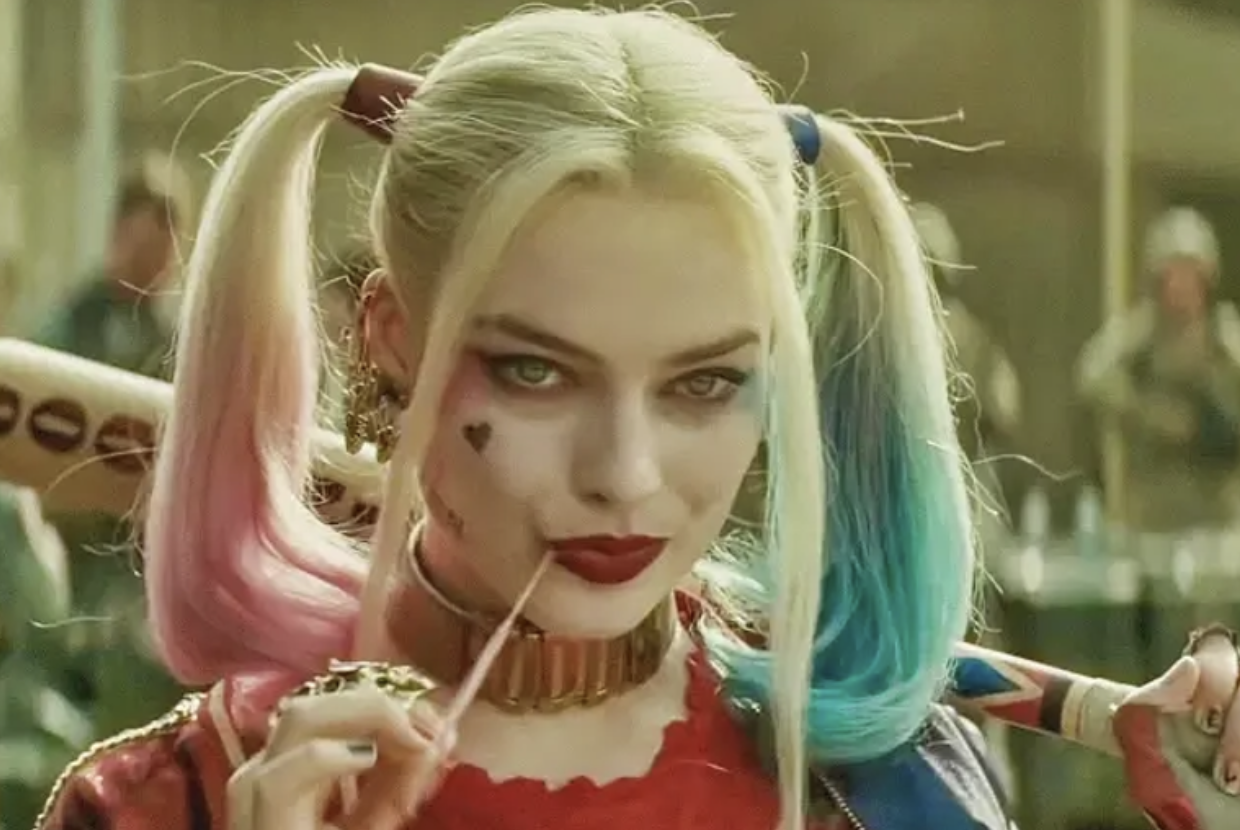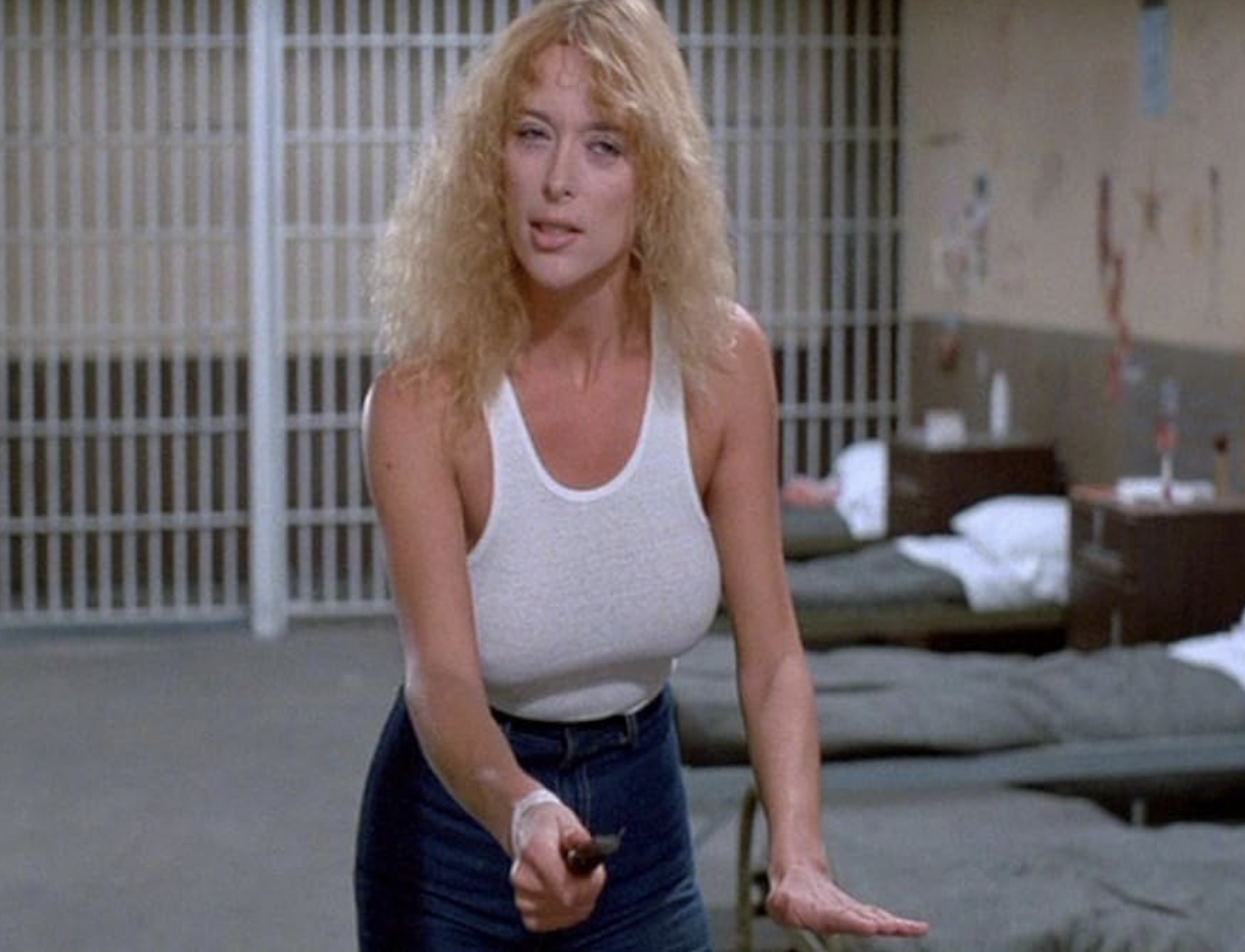There are movie characters who arrive like lightning bolts — unpredictable, electric, impossible to ignore — and then there’s Harley Quinn, who crashes through the wall laughing, bat swinging, lipstick smeared, and chaos in her wake. In the DC Extended Universe, Margot Robbie’s portrayal of Harley has been one of the few things everyone can agree on: the role fits her like a hand grenade with a pink ribbon tied around it. Across Suicide Squad (2016), Birds of Prey (2020), and The Suicide Squad (2021), Robbie has done the unthinkable — turned a sidekick once created for animated television into one of cinema’s most complex, magnetic, and wildly entertaining antiheroines.
But Harley Quinn’s story didn’t start in the movies. Before Robbie ever donned the pigtails and mallet, Harley was born out of love — or rather, Mad Love.
Origins: The Joke’s on Her
Harley Quinn first appeared in Batman: The Animated Series in 1992, a one-off character created by Paul Dini and Bruce Timm. She was meant to be nothing more than a bit player — a comic relief moll for the Joker. But the chemistry between them (and the tragic absurdity of it) made her stick.
A year later, Dini wrote the now-classic comic Mad Love, which redefined Harley as something deeper: a psychiatrist named Dr. Harleen Quinzel, who falls for her deranged patient, the Joker, during her time at Arkham Asylum. In trying to heal him, she becomes infected by his madness — a toxic romance played for both laughs and heartbreak. The “love” part is debatable. The “mad” part isn’t.
Harley was both a punchline and a tragedy — the woman who thought she could fix evil and ended up joining it. But audiences loved her. She was brash, funny, violent, and vulnerable all at once. She was the chaos that made the Batman universe feel human again.
Enter Margot Robbie: The Beautiful Disaster
When David Ayer’s Suicide Squad hit theaters in 2016, nobody was really sure what to expect. The DC film universe was still trying to find its tone — somewhere between Zack Snyder’s operatic gloom and Marvel’s brightly colored banter. Then Margot Robbie appeared on screen as Harley Quinn, licking a lollipop and swinging a baseball bat, and suddenly, everyone forgot what movie they were watching.
Robbie didn’t just play Harley — she inhabited her. Every line dripped with flirtation and threat, every move balanced between psychosis and playfulness. She was unpredictable, sexy, terrifying, and somehow — impossibly — sympathetic.
Ayer’s film was messy, sure, but Harley was its beating, bat-swinging heart. She gave the movie its rhythm, its madness, and its rare flashes of humanity. You couldn’t take your eyes off her — which was exactly the point. Harley has always been the jester who steals the show.
Robbie’s performance fused the comic book legacy with something raw and modern. Her Harley wasn’t just the Joker’s girlfriend. She was his ex, his victim, his echo — and his rebellion.
Love, Guns, and Glitter: The Harley Quinn Arc
Across her three DC films, Robbie’s Harley evolves from sidekick to survivor to self-made chaos queen. It’s a surprisingly coherent arc for a franchise that has rarely been accused of consistency.
Suicide Squad (2016) – Love and Chains
In her debut, Harley is fresh out of the Joker’s arms — literally and figuratively. She’s imprisoned, collared, and only let out because the government needs expendable psychopaths to fight bigger ones. Ayer’s film gives us flashbacks to her origin: the therapy sessions that turned into flirtation, the vat of chemicals that baptized her in insanity, and the twisted devotion that defined her.
Robbie plays it all with heartbreaking conviction. There’s a scene where Harley jumps into the acid for her lover, smiling as her skin burns. It’s grotesque, romantic, and perfectly Harley — she mistakes pain for passion, violence for affection.
But by the end, we see cracks forming in her loyalty. When she believes the Joker is dead, Harley grieves, but she doesn’t crumble. She fights, she jokes, she survives. For the first time, she’s not just his punchline — she’s her own kind of dangerous.
Birds of Prey (2020) – Heartbreak and Rebirth
If Suicide Squad was Harley in captivity, Birds of Prey is Harley on parole — messy, free, and ready to burn it all down. Directed by Cathy Yan and produced by Robbie herself, this film is Harley’s emancipation party.
The Joker is gone, and Harley is finally forced to face the world without her toxic anchor. She’s broke, hunted, hungover, and newly single — a walking disaster in gold overalls. And yet, she’s never been more alive.
The film’s brilliance lies in its chaos. Told through Harley’s unreliable narration, it jumps through time, tone, and violence like a glitter bomb set off in a narrative blender. Robbie leans into the absurdity — delivering a performance that’s equal parts slapstick and sincerity.
This Harley is rediscovering herself, one bad decision at a time. She adopts a hyena, accidentally befriends a pickpocket, and teams up with a gang of badass women to take down a crime lord who’s more fragile than his ego suggests. By the end, Harley is reborn: not cured, not stable, but free.
It’s one of the best female-driven action movies in years — feminist, funny, and unapologetically weird. Robbie made sure of it.
The Suicide Squad (2021) – The Queen of Carnage
By the time James Gunn’s The Suicide Squad rolled around, Harley Quinn had nothing left to prove. Robbie’s third outing as the character shows a woman who knows exactly who she is — which makes her all the more unpredictable.
Gunn’s film treats Harley like an agent of chaos in a Shakespearean tragedy. She’s still impulsive and deranged, but now she’s strangely wise. When a dictator proposes to her in a scene that’s both hilarious and unnerving, she kills him mid-monologue — not because she’s jealous, but because she promised herself she’d spot the red flags next time.
It’s one of Robbie’s best moments in the entire franchise — a mix of sincerity and absurdity that defines Harley at her core. She’s a woman who’s learned from her mistakes, even if she still wears them like accessories.
And when Harley single-handedly escapes from captivity in a blood-soaked ballet of bullets and flowers, it’s clear that Margot Robbie’s version of the character has transcended the comic book panel. She’s become something mythic — an avatar of liberation wrapped in sequins and madness.
Margot Robbie’s Magic Trick
What makes Robbie’s Harley so enduring is her ability to make the grotesque feel human. In lesser hands, Harley could have been a cartoon — a sexy sociopath in hot pants. But Robbie imbues her with contradictions that feel real: she’s violent yet vulnerable, self-destructive yet self-aware.
Robbie doesn’t sanitize Harley’s madness. She lets it breathe, sweat, and laugh at itself. She understands that Harley is not supposed to be “fixed.” She’s not a hero on a redemption arc — she’s a woman carving her own definition of sanity out of a world that keeps calling her crazy.
In Birds of Prey, Harley’s breakfast sandwich scene (a slow-motion ode to greasy indulgence) tells you everything you need to know about her. She loves big, she breaks hard, and she’ll fight a dozen armed goons for a decent egg sandwich. It’s ridiculous and strangely profound — a moment of small, stupid joy in a life defined by chaos.
Robbie’s Harley is also, crucially, funny. Not just in a quippy, comic-book way — but in a genuinely human, absurdist way. She has impeccable timing, a physicality that borders on Chaplinesque, and a willingness to make herself look utterly ridiculous. Harley is, at her core, a clown — and Robbie plays her with both humor and tragedy, like all the best clowns.
The Madness of Feminism
Underneath the explosions and glitter, Harley Quinn’s arc in the DC films is also one of accidental feminism. She begins as property — the Joker’s girl, the government’s pawn — and ends as her own brand of chaos. She doesn’t seek power to rule; she seeks freedom to exist.
Harley’s rebellion isn’t about overthrowing patriarchy — it’s about laughing in its face while setting it on fire. She doesn’t preach empowerment; she embodies it through her reckless self-expression. Her feminism is messy, loud, unapologetic, and, yes, sometimes homicidal.
Cathy Yan once described Birds of Prey as “a breakup movie disguised as a riot,” and that’s exactly what Harley is — the embodiment of every bad decision that somehow feels like liberation. She’s not a role model, but she’s real in a way superheroes rarely are.
The Legacy of the Laughing Girl
Harley Quinn’s evolution — from animated sidekick to cinematic icon — mirrors Margot Robbie’s own rise in Hollywood. Both started underestimated and ended up rewriting the rules.
Robbie turned Harley into one of the defining pop culture figures of the 21st century. She’s inspired cosplay, tattoos, Halloween costumes, and probably a few regrettable breakups. But more than that, she’s turned chaos into catharsis.
When Robbie swings that bat, she’s not just breaking skulls — she’s breaking stereotypes. The “crazy ex-girlfriend” has become a symbol of freedom, fun, and fierce individuality.
The Punchline
In a cinematic universe full of gods, billionaires, and brooding vigilantes, Harley Quinn stands out because she’s the only one who seems to be having fun.
Margot Robbie’s Harley doesn’t save the world. She doesn’t even try. But she makes it a hell of a lot more interesting. Her laughter echoes through the rubble, daring you to judge her, daring you to join in.
Harley Quinn, as played by Robbie, is the rare comic book character who feels alive — not in spite of her madness, but because of it. She’s love gone wrong, freedom gone wild, and glitter stuck to a bullet wound.
In the end, Harley doesn’t need the Joker. She doesn’t need Batman. She doesn’t even need a cause. She just needs her bat, her hyena, and maybe a decent sandwich.
And that’s the beautiful, bloody poetry of it all.





